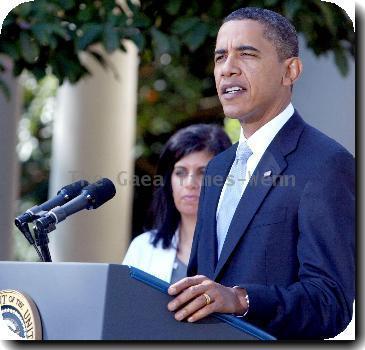Watchdog’s report: In bailout exit strategy government must balance goals in selling assets
By Marcy Gordon, APThursday, January 14, 2010
Panel: Unwinding bailout program to be tricky
WASHINGTON — The government will face a complex and delicate task when it moves to unwind the federal financial bailout that officially ends in October, and the rescue will leave a deep impact the economy long afterward, a report from a government watchdog panel says.
The $700 billion taxpayer bailout will leave a legacy in financial markets, which may now be convinced the government will rescue financial institutions considered too big to fail, according to a new report by the Congressional Oversight Panel.
That expectation gives big banks and other institutions an advantage in raising capital that smaller ones don’t enjoy and encourages a “moral hazard” for the big banks to take risks again, the report released Thursday said.
It said that as a result of the so-called Troubled Asset Relief Program, or TARP, the Treasury Department now holds hundreds of billions of dollars of assets — about $258 billion as of Dec. 31 — that it must eventually sell. That will require a delicate balance between maximizing the return to taxpayers and maintaining financial stability.
“There are … unavoidable political considerations that will affect these decisions, and that political context in the current environment can shift quickly and unpredictably,” the report says.
There is also the question of how the banks, other financial firms and automakers that received bailout aid intend to make the taxpayers whole, according to the panel.
“In fact, TARP will live on for years,” panel chairwoman Elizabeth Warren said in a call with reporters Wednesday, noting that Treasury will still have authority to dispense some funds and will be managing the hundreds of billions in assets. “Treasury must learn from the mistakes it made over the past year,” she said.
In response to the report, Treasury spokeswoman Meg Reilly said the department “has demonstrated a cautious, transparent and disciplined approach in winding down the emergency programs, which is already yielding positive returns for taxpayers and the health of the economy.”
Treasury estimates that TARP programs aimed at stabilizing the banking system will earn a profit thanks to dividends, interest, early repayments and the sale of the government’s stakes in the institutions receiving aid, Reilly said in a statement.
“Taxpayers have already received over $16 billion in profits from all TARP programs and that profit could be considerably higher as Treasury sells additional (stakes) in the weeks ahead,” she added.
The panel, one of three oversight mechanisms Congress mandated for the bailout that it enacted at the height of the financial crisis in October 2008, makes periodic assessments of how the government is managing the rescue program.
Banks once threatened by the undertow of a Wall Street collapse are now posting profits and proposing generous bonuses for their executives.
Treasury Secretary Timothy Geithner announced last month that the politically unpopular bailout program, originally slated to expire at the end of last year, would be extended until Oct. 3. The Obama administration says the fund is still needed to prevent further turmoil in the banking system.
The extension set up a struggle between Democrats who favor using some of the leftover TARP money to help generate jobs, and Republicans who say it should be used to shrink soaring budget deficits.
The administration projects that the losses to the government from the bailout will be around $116 billion — compared with an estimate of $340 billion in August. Most of the losses are expected to come from the rescue of General Motors and the bailout of insurance conglomerate American International Group Inc.
“Our stewardship has shown measurable progress,” the Treasury spokeswoman’s statement said.
President Barack Obama plans to announce Thursday a new fee on the country’s biggest financial firms to recoup as much as $120 billion in TARP funds.
The panel’s report noted that Treasury has put forward three principles to guide its decisions of when to sell the assets: maintaining the stability of the financial system, preserving the integrity of individual financial institutions, and maximizing return for taxpayers.
“These principles may sometimes be at odds with one another,” it said. The most profitable time to sell an asset may not be the moment that best maintains financial stability or buttresses an institution.
Besides Warren, the panel also includes Paul Atkins, a former member of the Securities and Exchange Commission; Richard Neiman, superintendent of banks at the New York State Banking Department; Damon Silvers, associate counsel of the AFL-CIO; and corporate tax lawyer J. Mark McWatters.
(This version CORRECTS McWatters is on panel, Hensarling no longer serves.)
Tags: Barack Obama, Emergency Management, Government Programs, North America, Timothy geithner, United States, Washington




